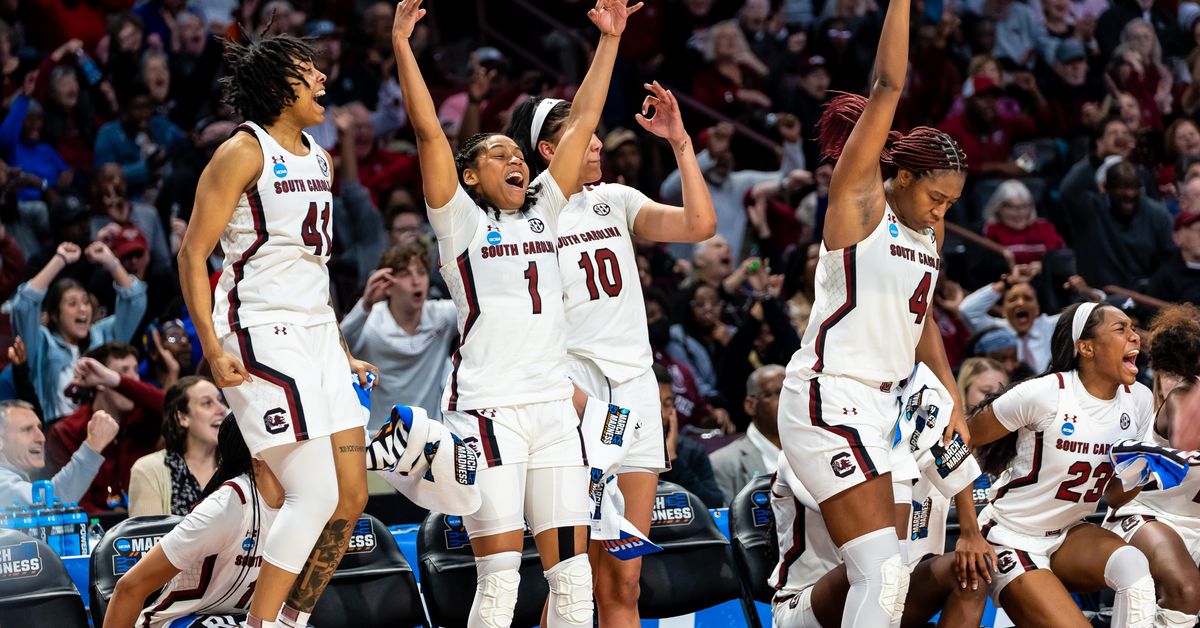Of the 64 teams to compete in the 2023 Women’s NCAA Tournament, over half are considered high-majors. This includes programs from the typical “power five” conferences — the ACC, Big Ten, Big 12, Pac-12 and SEC — as well as the Big East, which had a highly competitive women’s basketball season prior to the national tournament.
Two rounds into the tournament, every single remaining team is a high-major. This isn’t entirely unexpected; power five schools are typically the ones competing for NCAA championships, and though conference realignment has changed the overall landscape of the NCAA throughout the years, one-off victories and Cinderella stories in the women’s NCAA Tournament are uncommon.
The Sweet Sixteen begins this Friday, March 24, and there are a lot of familiar programs still competing. There are, however, a handful of high-majors that didn’t make it that far, perhaps surprisingly. While we wait for the next round of NCAA Tournament games to tip-off, let’s check in on which high-majors have met expectations, which have exceeded expectations and which have already gone home.
Meeting expectations
First, the obvious. Each of the four No. 1 overall seeds in the tournament went to a power five school, and two of them are looking great. The defending NCAA champion South Carolina Gamecocks, who entered the 2023 Tournament as the only undefeated team in the nation, have shown no signs of slowing down, defeating No. 16 Norfolk State and No. 8 South Florida handily in Greenville Region 1.
The Virginia Tech Hokies, too, have continued their roll, extending their win streak to 13 games with wins over No. 16 Chattanooga and No. 9 South Dakota State. The precise halfcourt game that recently won the Hokies an ACC championship has proven to be too much for their NCAA Tournament opponents thus far, and they’ve delivered as Seattle Region 4’s top overall seed.
It’s not just the No. 1 seeds that have been putting in work, though. The LSU Lady Tigers — who were in conversation for a No. 1 seed for much of the season before a couple of untimely losses ultimately seeded them at No. 3 in the Greenville 2 region — soundly beat a worthy No. 6 Michigan squad in the second round. LSU will face the No. 2 Utah Utes in the Sweet Sixteen; Utah had little trouble with No. 15 Gardner-Webb in the first round and came out on top against the No. 10 seed and Ivy League champion Princeton Tigers two days later.
Arguably the most impressive high-major, though, has been the Tennessee Lady Vols. Seeded at No. 4 in the Seattle 3 region, Tennessee has obliterated its competition so far, defeating No. 13 St. Louis by 45 points and No. 12 Toledo by 47. The Lady Vols’ average margin of victory is the largest of any team that has advanced to the Sweet Sixteen.
Elsewhere, the No. 2 seed UConn Huskies have made short work of their Seattle 3 region opponents, defeating No. 15 Vermont by 43 points in the first round and No. 7 Baylor by 21 points in the second. Along those same lines, the No. 2 Iowa Hawkeyes beat No. 15 Southeastern Louisiana by 52 points in the opening round of the Seattle 4 region — the largest margin of victory of any game thus far in the NCAA Tournament — and survived a scare from No. 10 Georgia to advance to the Sweet Sixteen. Greenville 1’s No. 2 seed, the Maryland Terrapins, rolled past No. 15 Holy Cross in the opening round and then defeated No. 7 Arizona, earning a Sweet Sixteen matchup with the No. 3 Notre Dame Fighting Irish.
The road has been a little tougher for teams like the No. 3 Ohio State Buckeyes (Seattle 3 region) and the No. 4 UCLA Bruins (Greenville 1 region), but they nonetheless survived their lower-seeded competition and advanced to the Sweet Sixteen. Ohio State defeated No. 14 James Madison and No. 6 North Carolina to get there; UCLA beat No. 13 Sacramento State and No. 5 Oklahoma.
The pleasant surprises
:no_upscale()/cdn.vox-cdn.com/uploads/chorus_asset/file/24529580/1248836958.jpg)
March is, of course, all about the upsets, and while the higher seeds have mostly reigned supreme in NCAA Tournament thus far, a few high-major teams that were considered underdogs in their respective matchups have busted plenty of brackets with major upset wins. The No. 8 Ole Miss Rebels eked out a thrilling Seattle 4 region win over the No. 1 seed Stanford Cardinal in the second round, advancing to play No. 5 Louisville in their first Sweet Sixteen appearance since 2007.
The No. 9 Miami Hurricanes have also played spoiler to higher seeds. After a dramatic first-round comeback over Greenville 2 region No. 8 seed Oklahoma State, Miami moved on to defeat No. 1 Indiana in the second round, ending a Sweet Sixteen drought that dated all the way back to 1992.
Individual program achievements aside, the performances of Ole Miss and Miami were also historic on a larger scale. As noted by The Athletic’s Sabreena Merchant, it’s been 25 years since two No. 1 seeds have been bounced from the NCAA Tournament prior to the Sweet Sixteen; it’s tempting to hold this against Indiana and Stanford, but it’s also a positive development for those interested in more parity in the women’s tournament. As Merchant writes, “No. 1 seeds have treated the first weekend [of the NCAA Tournament] as a bye into the Sweet Sixteen,” but that may not necessarily be the case anymore.
Credit should also be given to the Mississippi State Bulldogs, who added one more SEC representative to the big dance with a First Four victory over Illinois. Seeded at No. 11 in the Greenville 1 region, Mississippi State defeated No. 6 Creighton by 25 points in what was surely one of the bigger upsets of the first round. The Bulldogs then bowed out in the second round, but not before giving No. 3 Notre Dame a scare in a low-scoring contest.
The disappointments
:no_upscale()/cdn.vox-cdn.com/uploads/chorus_asset/file/24529559/1248916664.jpg)
On the opposite side of every upset is bitter disappointment. For every heart-warming statistic about a program reaching its first Sweet Sixteen in one, two or even three decades, there’s the unfortunate reality of another program failing to meet the lofty expectations that come with a high NCAA Tournament seeding.
The Indiana Hoosiers embody this disappointment. Indiana’s loss to No. 9 Miami in the second round of the tournament put an abrupt end to what had been a magical season; the Hoosiers’ 28 wins were their most-ever in a season, and they earned a No. 1 seed in the NCAA Tournament for the first time in program history. An early tournament exit — on their home court in Bloomington, no less — was surely not the ending they had in mind.
Stanford, meanwhile, is a program well-accustomed to both Pac-12 and NCAA Tournament success, which makes the Cardinal’s loss to No. 8 Ole Miss perhaps even more shocking. The 2023 iteration of the Cardinal was a veteran group that had persevered through an increasingly-competitive Pac-12 schedule and sought to get back to the heights it reached in 2021, when Stanford won the NCAA Championship. Instead, the Cardinal were stunned in the second round, recording more turnovers (21) than field goals made (17) in a premature exit.
While teams like the Texas Longhorns (No. 5 seed in Seattle 4) and the Washington State Cougars (No. 5 seed in Greenville 2) did not fail to meet the massive expectations that Indiana or Stanford did, their early-tournament losses were still disappointing nonetheless. The Cougars, who were fresh off an improbable Pac-12 Tournament championship, lost by double-figures to No. 12 FGCU in the first round of the NCAA Tournament, rarely seeming in control of a game that should have at least been more competitive. Texas, meanwhile, showed off its signature defense in an opening-round win over No. 13 East Carolina, holding the Pirates to 40 points, but it was its offense that couldn’t seal the deal against No. 5 Louisville; the Longhorns lost by 21 points to the Cardinals, failing to recover after a miserable start to the game.














